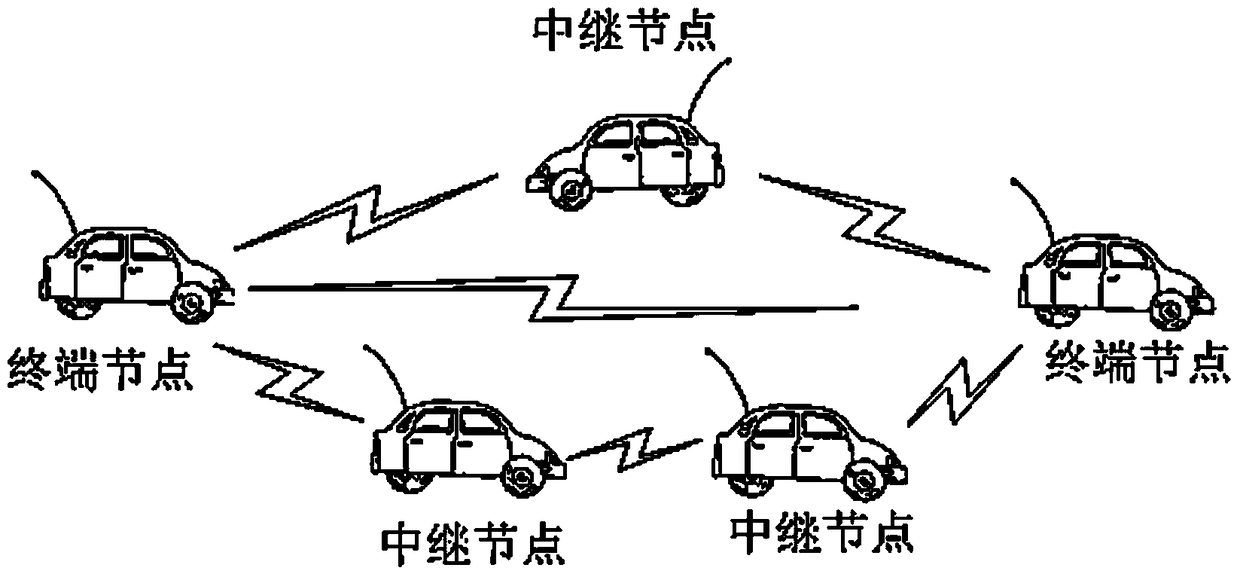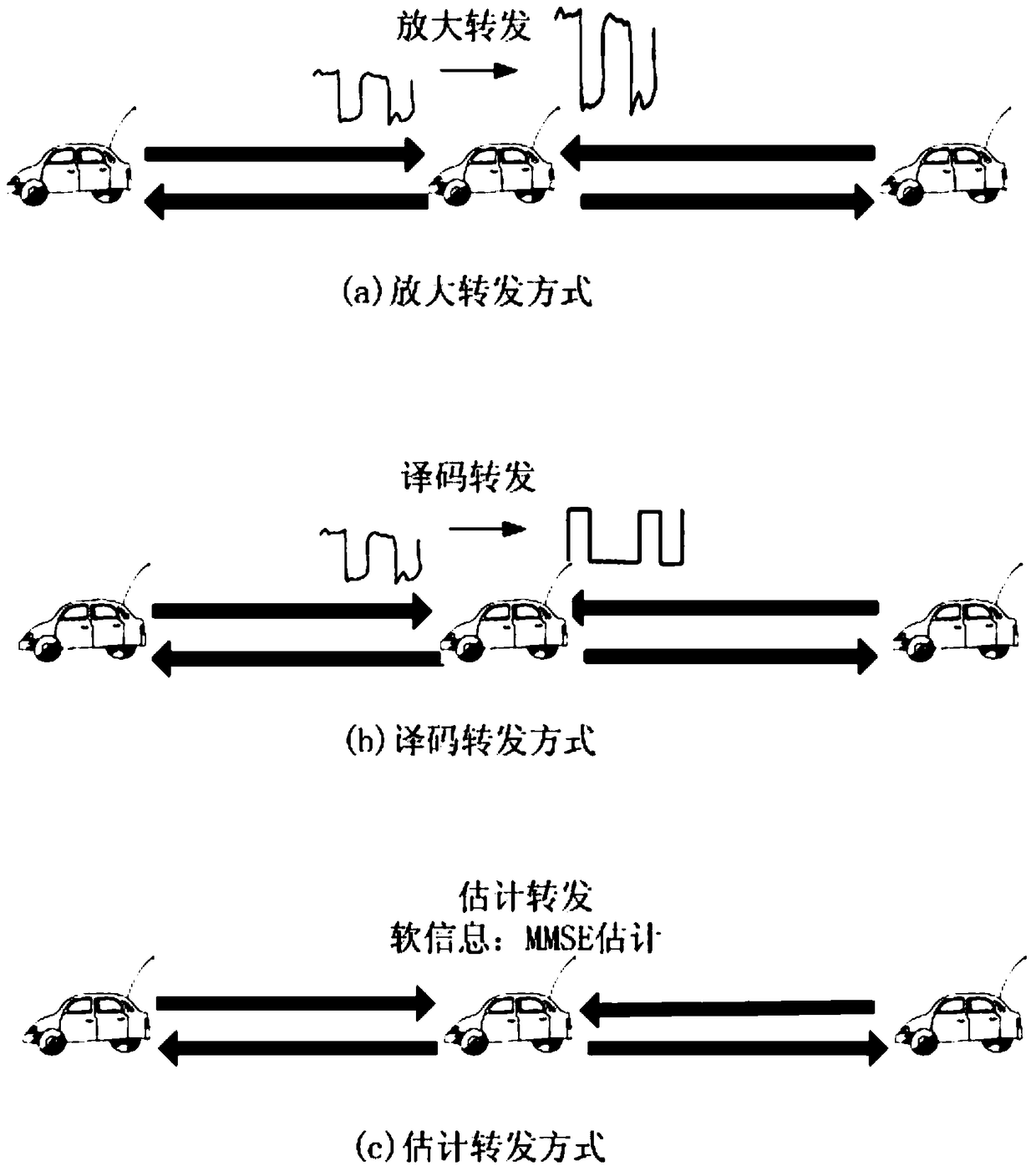An Estimated Forwarding Method for Full-duplex Traffic Cooperative Communication Network
A technology for cooperative communication and transportation, applied in the direction of shaping network, digital transmission system, baseband system components in the transmitter/receiver, etc., can solve the problem of wrong propagation destination node, etc., and achieve the effect of reducing the bit error rate
- Summary
- Abstract
- Description
- Claims
- Application Information
AI Technical Summary
Problems solved by technology
Method used
Image
Examples
Embodiment 1
[0044] like figure 1 As shown, in the full-duplex traffic cooperative communication network system, it is assumed that there are two terminal vehicle nodes and multiple relay nodes. Two end nodes exchange information through these relay nodes.
[0045] The following is an example of the case where there is only one relay node in the network, such as figure 2 shown. Suppose there are two terminal nodes (T 1 and T 2 ), with N T1 ≥1 and root N T2 ≥1 antenna; the relay node is denoted by R, with N r ≥1 antenna. Two end nodes exchange information through relay nodes. In the first slot, the two terminal nodes T 1 and T 2 Simultaneously emit signal x 1 and x 2 to the relay node, the signal r received by the relay node can be expressed as:
[0046] r=H 1 x 1 +G 1 x 2 +n ⑴
[0047] Here, H 1 and G 1 represent T respectively 1 and R and T 2 Multi-antenna or single-antenna channel between R and R, n is the channel noise.
[0048] In the second time slot, the relay n...
PUM
 Login to View More
Login to View More Abstract
Description
Claims
Application Information
 Login to View More
Login to View More - R&D
- Intellectual Property
- Life Sciences
- Materials
- Tech Scout
- Unparalleled Data Quality
- Higher Quality Content
- 60% Fewer Hallucinations
Browse by: Latest US Patents, China's latest patents, Technical Efficacy Thesaurus, Application Domain, Technology Topic, Popular Technical Reports.
© 2025 PatSnap. All rights reserved.Legal|Privacy policy|Modern Slavery Act Transparency Statement|Sitemap|About US| Contact US: help@patsnap.com



